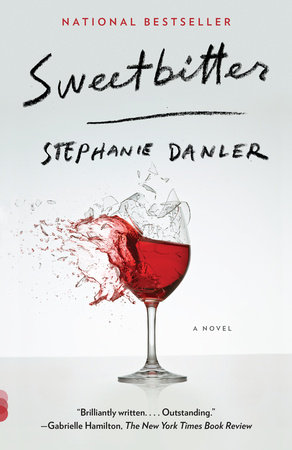Sweetbitter Reader’s Guide
By Stephanie Danler


1. The title appears within one of the novel’s epigraphs, a quote from a poem by Sappho: “Eros once again limb-loosener whirls me / Sweetbitter, impossible to fight off, creature stealing up.” How does this fit into Tess’s story?
2. On page 4, Tess likens the Hudson River to Lethe. According to Greek mythology, the dead drink from Lethe to forget their previous lives. On page 13, in her interview with Howard, Tess says, “Or maybe it means we’ve forgotten ourselves. And we keep forgetting ourselves. And that’s the big grown-up secret to survival.” What is Tess trying to forget?
3. Throughout the novel, Tess considers the idea that she is a “fifty-one percenter,” whose optimistic warmth, intelligence, work ethic, empathy, and self-awareness and integrity made her uniquely qualified to work at the restaurant. How does this concept figure into her developing sense of herself, and her coworkers? Does it prove to be a good thing?
4. Simone is prone to lecturing Tess philosophically. (Appetite “cannot be cured. It’s a state of being, and like most, has its attendant moral consequences.” [page 62] “Your senses are never inaccurate—it’s your ideas that can be false.” [page 78]) What do these proclamations tell us about Simone’s character? And what do we learn about Tess?
5. “The sharing of secrets is a ceremony, marking kinship. You have no secrets yet, so you don’t know what you don’t know” (page 89). What secrets does Tess develop? Do they help her, or hurt her?
6. What does Simone mean when she tells Tess, “And you want to take every experience on the pulse” (page 95)? And when Tess repeats that phrase to Jake on page 145, why does he say, “You’re too malleable to be around [Simone]”?
7. The concept of “terroir” appears several times in the novel. On page 133, Tess wonders if people can have it. Which characters do you think have terroir? Can a book have it?
8. At what point does it become clear to the reader that Tess has developed a problem with drugs and alcohol? When does she realize it?
9. Simone and Jake each influence Tess greatly. Whose influence proves more beneficial, and whose is more damaging? What does she want from each of them? What does she get?
10. On page 196, Tess tells Jake, “You’re all terrified of young people. We remind you of what it was like to have ideals, faith, freedom. We remind you of the losses you’ve taken as you’ve grown cynical, numb, disenchanted, compromising the life you imagined. I don’t have to compromise yet. I don’t have to do a single thing I don’t want to do. That’s why you hate me.” What do you think of her assessment?
11. Several of Tess’s coworkers assign to her nicknames of their own devising—“new girl,” “Skipper,” “Fluffer,” “little one.” The reader doesn’t even learn her real name until page 216. What do these names have in common? Are they terms of endearment, or belittling?
12. What role does Howard play in Tess’s coming of age? What does he see in her that she hasn’t yet seen in herself?
13. Tess and Simone each came to New York at twenty-two. How were their paths similar, and how were they different?
14. Tess and Jake both grew up motherless. Simone becomes a mother figure for each. Which of them gets the most out of the relationship: Tess, Jake, or Simone?
15. Why does Samantha’s appearance at the restaurant affect Simone so deeply?
16. Why does discovering Simone’s key tattoo affect Tess so deeply?
17. When examining the photographs pinned to Jake’s wall, Tess thinks, “It reminded me, the way he skirted around those photos, of something Simone had told me during one of our lessons: try not to have ideas about things, always aim for the thing itself. I still did not understand these four photographs, the why of them” (page 291). What does this passage mean? What does she want to know?
18. Why does Tess feel so betrayed when she learns about Jake and Simone’s planned sabbatical? How does the timing, coinciding with the restaurant’s closing, affect her response?
19. Over the course of the novel, Tess devotes herself to studying wine—but after she shares her thoughts on Beaujolais, Mrs. Neely says, “Child, what is wrong with you? There’s no roses in the damn wine. Wine is wine and it makes you loose and helps you dance. That’s it. The way you kids talk, like everything is life or death” (page 335). What does this exchange do for Tess? What does Mrs. Neely represent?
20. When Sasha tells Tess about the reality of Jake and Simone’s relationship, why is she surprised?
21. Why does Tess have sex with Howard?
22. Regularly throughout the novel, the author interrupts Tess’s storytelling with collections of overheard fragments of conversation. What purpose do these poetic interludes serve? What does the final one represent?
Just for joining you’ll get personalized recommendations on your dashboard daily and features only for members.
Find Out More Join Now Sign In